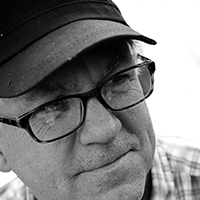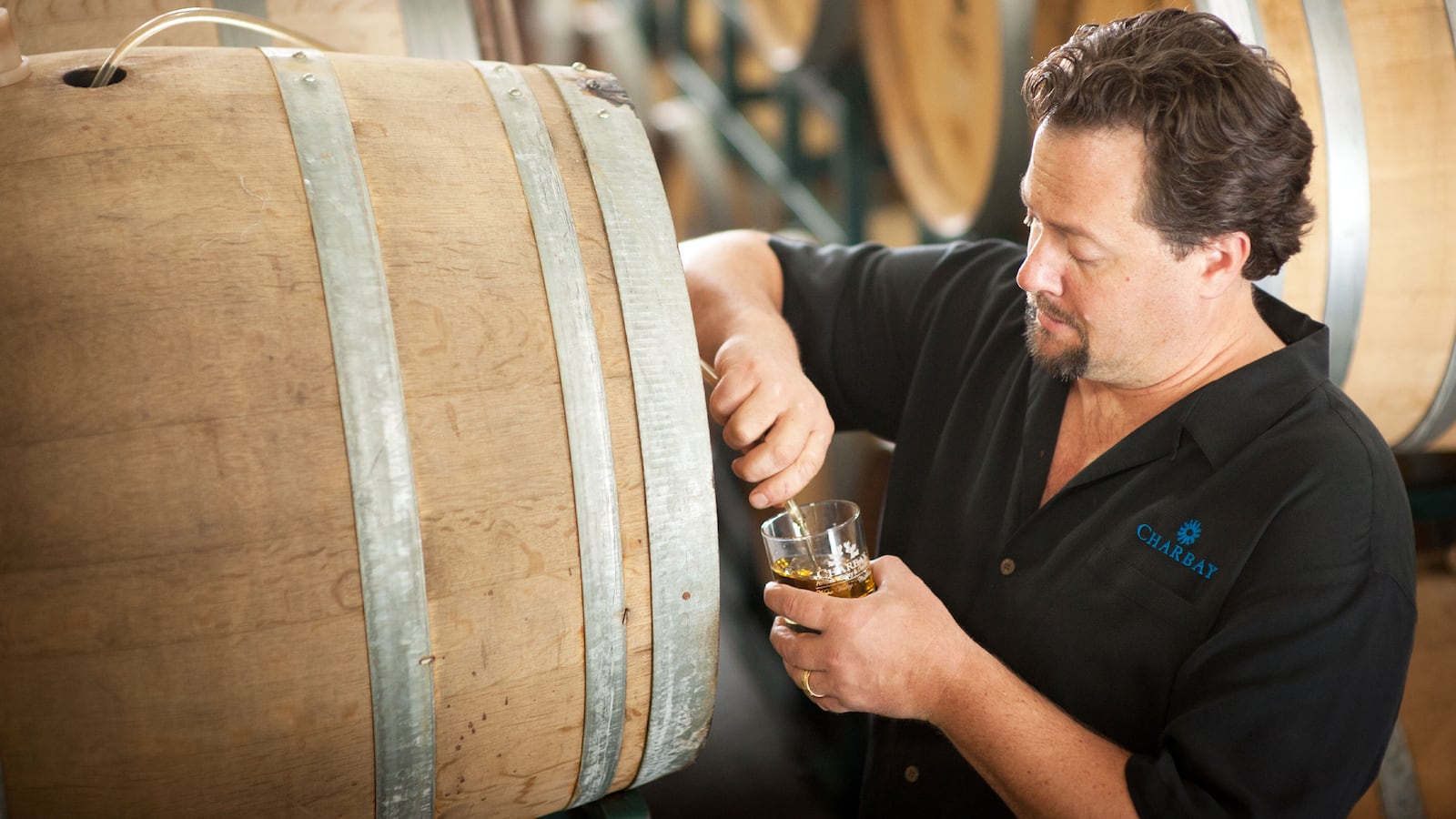“It was a beautiful copper still,” says Marko Karakasevic. “And my first job in the distillery was sitting on a bucket in that still with a green scrubber, cleaning the inside.”
Karakasevic was ten years old, and he literally grew up distilling. His father is Miles Karakasevic, founder of Domaine Charbay in Napa Valley, California. Miles, in turn, had also grown up distilling. “When I was a boy, I remember people coming to our vineyard in Yugoslavia to buy our wine and brandy, filling their bottles directly from our barrels,” Miles recalled in a 2016 collection of essays written by California distillers.
Miles studied winemaking in Belgrade, and in 1962 headed west and landed in Canada and then Michigan, where he worked for various wine makers. In 1970, he and his wife, Susan, pushed on further west to California, where he worked with several major vintners. Eventually the couple bought a 17-acre vineyard, making chardonnay, sauvignon blanc, and Cognac-style brandy on a traditional charentais still.

That the Karakasevic family distills is no surprise. That’s what they do. But how they’ve managed to carry on this tradition through a series of unfortunate events is striking. The family has been producing wine and brandy since 1751, and so have managed to continue on through the rise and fall of the Hapsburgs, the Hungarian Revolution of 1848, the Austro-Hungarian Compromise of 1867, the assassination of Archduke Franz Ferdinand of Austria, which led to World War I, then World War II, and was followed by Marshal Tito’s split from Stalin. And now, the Covid-19 pandemic.
Whew.
“Tradition” has the vague whiff of mildew and outdatedness clinging to it—the notion of continuing the old ways in the face of oppressive modernity. But what if one’s tradition is innovation? Like, say, knowing to uproot oneself and resettling halfway around the globe to keep a family tradition alive.
Or making chardonnay designed for dessert.
In 1987, Miles and Susan launched one of their first innovations, which they called a “dessert chardonnay.” This was essentially a fortified wine similar to the pineau des charentes made in France. They scrabbled the letters from chardonnay and brandy and called it Charbay. Several years later, concluding that their original name for their business Domaine Karakash was hard to pronounce and even harder to remember, they renamed the whole company Domaine Charbay. It’s been known as that ever since.
Marko grew up in California laboring without pay at their vineyard and distillery—a hazard of growing up in a family with a small business. He later found paid work at several winemakers in the Napa Valley. At one small winery, he learned more about the intricacies of fermentation. At a large-scale commercial winery, he worked the pumps and valves and much else. “So I learned mass fluid transfer technology,” he says.
In high school, he suffered a shoulder injury playing football that required physical therapy. The process of healing intrigued him enough that he left the valley to pursue a career as a physical therapist. “I liked helping people,” he says. And he liked that it had the potential to be a job that would allow him to travel internationally, posting up for six months here and there and then moving on.
But the new profession didn’t take. Turns out, one doesn’t get away from 12 generations of tradition easily. His father asked him to come back to the distillery, and so he left school after a year and without a degree. “And finally I started getting paid,” he says.
He started work around the time Absolut Citron hit the market, became a runaway bestseller (thanks to the Cosmopolitan and Sex and the City), and triggered a flood of other flavored vodkas. In his travels, Marko saw how popular these were, and suggested to his dad that they make their own. “My dad shot me down,” he recalls. “He said, ‘We don’t make wodka in our family.’”
But at the time Miles was working up a limoncello made with a Meyer lemon extract. Marko asked his father how many people did he think were drinking limoncello? And how many were drinking vodka? The numbers were irrefutable and Marko prevailed. They made and released a Meyer lemon vodka, and it rapidly took off.
When Marko was 14 working with his family, one of his tasks was to collect black walnuts from the orchard behind their property to make their nocino. (This was a great job, Marko recalls, mostly because he got to drive a truck without a license.) In the process, he learned out to make extracts from fresh products. And those early skills in capturing the essence of the freshly harvested paid dividends as Charbay expanded its vodka line, bringing natural flavors to a largely flavorless spirit. After lemon came blood orange, key lime, green tea, ruby red grapefruit and raspberry-inflected vodkas.
“We were going to have something for everybody,” he says. “If they don’t want this, they’re going to take that.”
Marko expanded into hopped whiskey—his family in Yugoslavia had never been grain distillers, but focused on fruits. But growing up in America, he was deeply interested in whiskey.
He was also interested in beer—he’s been a home brewer for years. “So why can’t I just take this delicious Czech style Pilsner lager that I made, and distill it,” he wondered. (Almost all whiskey is made from grains after they’ve been converted into a so-called distillers beer that doesn’t have any bitter hops.) “And my dad said, ‘that’s not American whiskey—it’s not what anybody does,’ and so he shot me down on that.”
Yet, Marko persisted. In 1999, he had the chance to buy 24,000 gallons of Czech pilsner from a brewery. “We double distilled three tankers of it back-to-back 24 hours a day for three-and-a-half weeks,” then barreled it.
He’s released barrels of the whiskey every few years, which has become deeper and richer over time. These pioneering pilsner whiskies have attracted the attention of semi-cultish whiskey fans in search of new flavor profiles who pay hundreds of dollars for a bottle. (“Sharp, spicy, and distinct,” noted one review of the 13-year release.)

And Charbay continued to explore new terrain. (“I can spell ‘focus,’ but that’s about it, Marko says.) They made a rum from sugar cane syrup shipped in from Maui. And when Miles and Susan spent time in Mexico, they became fascinated by tequila. A drum of agave syrup suddenly showed up at the distillery one day for experimentation. Charbay later teamed up with noted tequila producer Carlos Camarena, producing their own tequila at his La Alteña distillery and teaming up to import his Tequila Tapatio.
As with so many other small distilleries, the Covid-19 pandemic pulled the rug out from under them—they depended on bars to highlight their products, and that route to market suddenly evaporated. Marko says it’s fortunate that they had excess capacity and a new and extensive bottling line, so they stepped up contract production, working with “about ten” entrepreneurs to create new brands. Among their bigger clients is the Los-Angeles-based Wolves Whiskey, which has been releasing limited bottling of selected barrels of their aged hopped whiskey in bottles with labels made of Italian leather. “Making rapid changes in concept to be able to keep the lights on and pay bills is strenuous,” Marko says.
What’s next in staying current and ensuring that the 13th generation of distiller doesn’t turn out to be the unlucky one? Marko has been carefully watching the ready-to-drink (RTD) market—canned and bottled pre-made cocktails. “I still have got to get my act together and finalize formulas for some RTDs, because they’re totally accepted now,” he says.
And he has one other major project in the works: keeping the tradition alive by training his two sons, now five and ten years old.
“The 14th generation of distillers in my family are around and learning,” he says. “They know where the distillate comes out of the still.”








